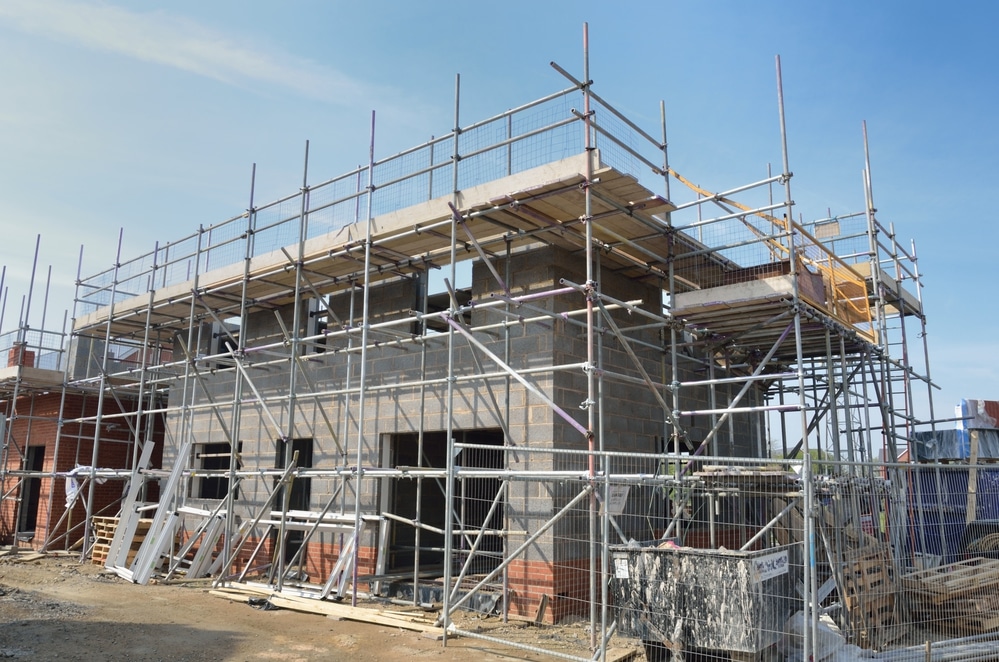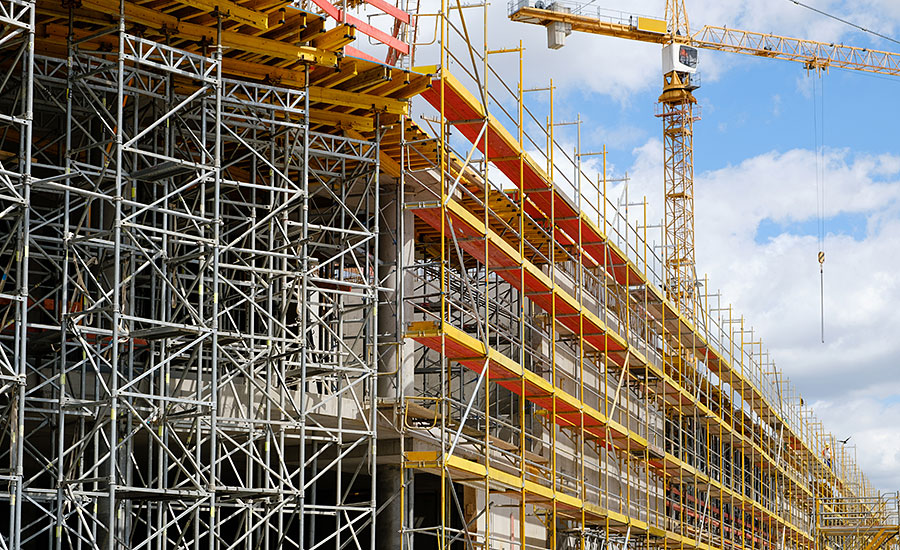Scaffolding Guildford: The Best Option for Your Building and Renovation Projects
Scaffolding Guildford: The Best Option for Your Building and Renovation Projects
Blog Article
Checking Out the Various Types of Scaffolding Utilized in Construction Tasks
The construction industry depends heavily on numerous kinds of scaffolding to meet particular project demands, each offering distinctive benefits and applications. Typical frame scaffolding supplies a strong structure for general jobs, while put on hold scaffolding is essential for work on skyscraper structures.

Conventional Frame Scaffolding
Typical frame scaffolding is among the most widely utilized methods in the construction sector due to its robustness and convenience. This system consists of horizontal and vertical frames that are constructed to produce a secure platform for products and workers. The primary parts include upright messages, horizontal journals, and angled braces, which with each other give a solid framework that can support considerable loads.
Among the essential benefits of typical frame scaffolding is its flexibility to different building and construction projects, ranging from domestic buildings to huge business structures. The modular style enables for simple setting up and disassembly, making it reliable for both lasting and short-term jobs. Additionally, the system can be personalized in height and width, accommodating various building designs and website problems.
Security is critical in scaffolding applications, and typical structure systems are furnished with guardrails and toe boards to avoid falls and guarantee employee protection. Regular examinations and adherence to security guidelines are important in preserving the honesty of the scaffold (Scaffolding). In general, conventional structure scaffolding continues to be a basic option in the building sector, supplying a trustworthy platform for labor and improving overall job efficiency

Suspended Scaffolding
Suspended scaffolding uses an unique solution for building and construction projects that require accessibility to raised surfaces, particularly in scenarios where typical structure scaffolding may be unwise. This sort of scaffolding is normally suspended from the roofing system or upper levels of a framework, making use of a system of platforms, ropes, and pulley-blocks to create a functioning room that can be adapted to different heights.
One of the key advantages of put on hold scaffolding is its flexibility. It can be conveniently repositioned or lowered to suit changes in building requirements, making it ideal for jobs such as window setup, frontage job, and maintenance on skyscrapers. In addition, the minimal impact of suspended scaffolding enables better use of ground space in metropolitan atmospheres, where room is commonly limited.
Security is an essential factor to consider in making use of put on hold scaffolding. Proper rigging and anchoring systems should be used to ensure stability and avoid crashes. Operators has to additionally be learnt the secure use this devices. In general, put on hold scaffolding provides a reliable and reliable remedy for accessing hard-to-reach areas in different building and construction situations, enhancing both efficiency and security on site.
System Scaffolding
System scaffolding, frequently considered a modern-day option in the scaffolding industry, includes pre-engineered elements that can be rapidly constructed and adjusted for various construction jobs. Scaffolding. This kind of scaffolding is characterized by its modular layout, which enables convenience and effectiveness on work websites, accommodating different elevations and architectural demands
Generally made from high-strength steel or light weight aluminum, system scaffolding supplies enhanced sturdiness and stability. The components consist of vertical posts, straight ledgers, and diagonal braces, which interconnect securely, ensuring a durable structure. The layout commonly incorporates standard fittings, streamlining setting up and disassembly procedures, thus decreasing labor time and costs.

Rolling Scaffolding
Moving scaffolding is a versatile choice to standard set scaffolding, designed for movement and simplicity of usage on building and construction sites. This sort of scaffolding includes a platform sustained by frames with wheels, permitting workers to easily relocate it as needed. The mobility function substantially enhances productivity, as it reduces downtime connected with disassembling and setting up repaired scaffolding.
Commonly created from scaffolder lightweight products such as light weight aluminum or steel, rolling scaffolding supplies a strong yet mobile option for projects requiring frequent repositioning - Scaffolding. It is especially beneficial in jobs such as paint, drywall installment, and electric work, where access to different heights and areas is needed
Safety is extremely important in rolling scaffolding layout, with attributes such as securing wheels to stop unexpected movement when in operation, and guardrails to secure workers from drops. In addition, numerous versions are adjustable in elevation, suiting various project requirements.
Cantilever Scaffolding

The layout of cantilever scaffolding commonly includes using arms or braces anchored to a structure or structure, allowing the system to expand outward safely. Safety is paramount; thus, these scaffolds should be crafted to hold up against environmental conditions and numerous loads. Normal scaffold design calculations assessment and upkeep are important to ensure architectural integrity and employee safety and security.
Cantilever scaffolding is favored for its convenience and effective usage of area, making it a popular option in city settings where room restraints prevail. Furthermore, it facilitates less complicated access to high altitudes, ultimately adding to the overall performance of building and construction jobs. Similar to all scaffolding kinds, correct training and adherence to safety criteria are crucial for workers using cantilever scaffolding.
Final Thought
Standard framework scaffolding provides stability, while put on hold scaffolding supplies versatility for raised jobs. System scaffolding helps with quick assembly, and rolling scaffolding improves movement for differing job atmospheres.
Traditional framework scaffolding offers a sturdy structure for general tasks, while suspended scaffolding is important for job on high-rise structures.Moving scaffolding is a versatile choice to standard set scaffolding, created for wheelchair and convenience of use on building and construction websites. As with all scaffolding kinds, proper training and adherence to security criteria are critical for workers making use of cantilever scaffolding.
Traditional frame scaffolding gives stability, while suspended scaffolding uses versatility for raised jobs. System scaffolding helps with quick assembly, and rolling scaffolding boosts flexibility for varying work atmospheres.
Report this page